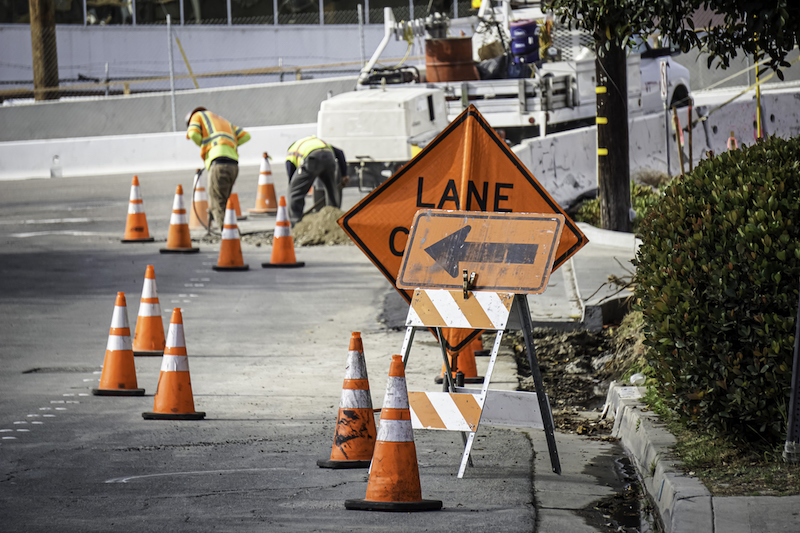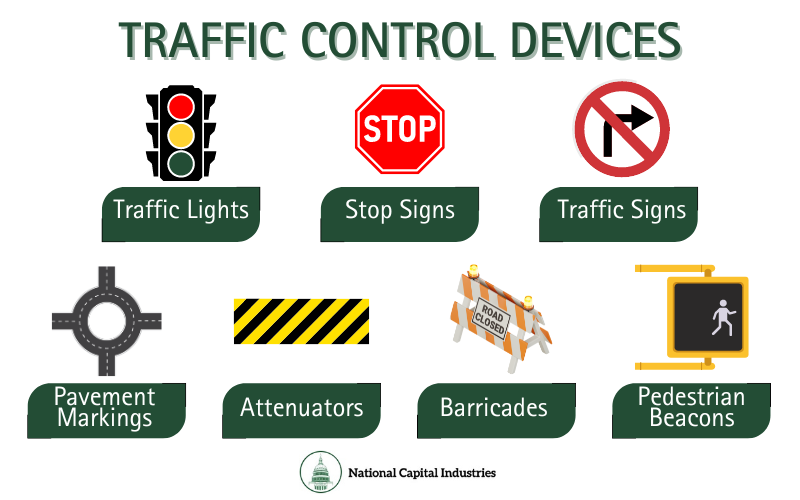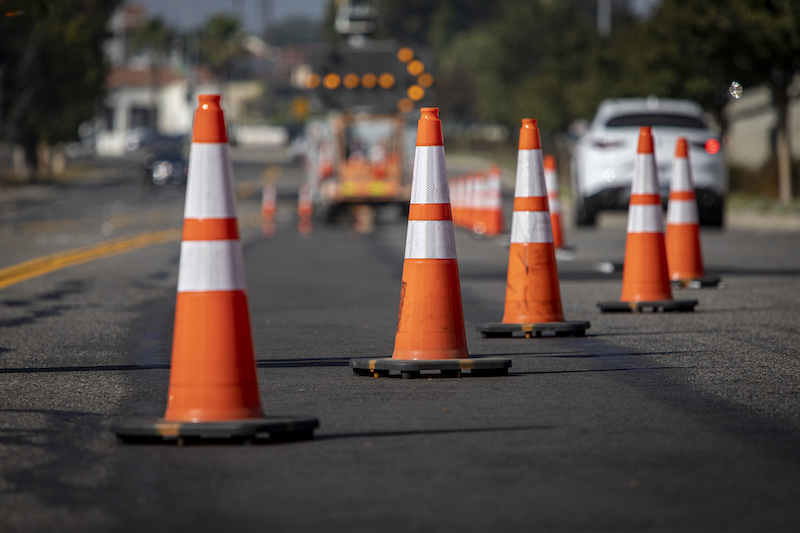
A traffic control device, as defined by the Federal Highway Administration, is a sign, signal, marking or other device placed on a particular roadway by the authority of a public body or official with jurisdiction, to regulate, guide, or warn traffic. It encapsulates a broad range of tools, from traffic lights and stop signs to pavement markings and other traffic signs, all aimed at managing the movement of pedestrians, bicycles, and motor vehicles, and enhancing safety on public roads.
For the ordinarily observant person, these devices seem to fade into the background, just part of the daily commuting landscape. However, understanding these devices’ functions can make your travels smoother and safer, and you can avoid being categorized as an alleged violator.
Every year, hundreds of thousands of traffic tickets are issued due to such violations. The consequences extend beyond a simple fine; a record of the violation may heighten insurance rates, tarnish one’s driving record, and pose severe legal repercussions. For construction managers, ignoring traffic sign compliance at a construction site can end in hefty fees, and legal action, and can put pedestrians in danger.

Many different types of traffic control devices help organize traffic and prevent accidents. These devices are crucial in construction settings to protect drivers, pedestrians, and workers. They control vehicle speeds, improve traffic management, and warn road users of hazards. Differentiating different types of traffic control devices and their intended purposes is crucial for project managers.
One of the most basic yet crucial types of Uniform Traffic Control Devices is the traffic signals. Commonly referred to as ‘traffic lights’, these signals help in orderly directing the flow of traffic, alternating between the mass movements of vehicles, bicycles, and pedestrians to avoid calamitous crashes using green, yellow, and red lights.
Next up, we have stop signs. This is a traffic control device that instructs drivers to stop before entering an intersection and proceed only when it’s safe to make their move. These signs are usually posted where visibility is limited, where roads with two different speed limits intersect, and to control traffic in school zones during hours when children are present.
In addition to traffic signals and stop signs, other traffic signs communicate essential information to motorists. They provide directions, give warnings about potential hazards, and enforce traffic laws, thus making the roads safe and efficient for everyone.
Pavement marking is yet another type of traffic control device. These could be straight lines, symbols, or words painted directly on the roadway. The objective of pavement marking is to provide clear directions and guidance to motorists and pedestrians, thereby reducing confusion and chaos.
Traffic attenuators, or crash attenuators, are traffic control devices that reduce the collision damage caused by motor vehicles. When placed in the proper position, they can save lives in and around construction zones.
Traffic barricades come in types 1,2, and 3 and are used to direct pedestrians and cars away from dangerous construction hazards. They can also be used in parking lots, school zones, highways, sporting events, concerts, and more.
Finally, pedestrian hybrid beacons are lesser-known but equally important. They are specialized signals used to help pedestrians and cyclists cross busy roadways safely. By combining traditional traffic signaling methods with unique light patterns and timing, these beacons offer greater confrontations to oncoming traffic – enhancing pedestrian safety.
Understanding these different devices can make your construction zone not only safer but also more efficient.

Traffic control devices are dictated by the Uniform Traffic Control Devices. Recognized by the Federal Highway Administration (FHWA), these are national standards for traffic control devices that provide for their consistent design, application, and placement to help road users anticipate and react safely to roadway conditions.
The use of numerous signals, signs, road markings, and other regulatory devices that guide traffic does not happen in a disorderly manner. Concrete rules and regulations guide the use and interpretation of these official traffic control devices, and understanding these can help us become more responsible and informed construction managers and road users.
The guidelines for designing, placing, and maintaining traffic control devices in the United States are spelled out in the 11th edition of the Manual on Uniform Traffic Control Devices (MUTCD) by the Federal Highway Administration. This document serves as a benchmark to ensure a uniform, nationwide standard for all traffic control devices.
As a road user, ignoring or misinterpreting these devices can result in receiving a traffic ticket, which is a legal traffic violation notice imposed by a police officer or enforcement official on a motorist or other road user who fails to obey traffic laws. As a construction manager, ignoring these compliance guidelines could result in liability for accidents or even the loss of federal aid funds.

Every object or design we encounter on the road, no matter how big or small, has been carefully planned and placed to fulfill a purpose—managing traffic and ensuring everyone’s safety.
An often-overlooked yet powerful instrument that guides traffic and can control traffic in chaos is the traffic control signals or traffic lights. These devices dictate the rhythm of traffic flow, turning a potential melee of cars, pedestrians, and bicycles into a coordinated ballet of stop-and-go movements. Simultaneously, traffic control devices drastically reduce the potential for accidents, proving vital to establishing traffic safety, particularly in high-activity zones like school districts and jam-packed urban areas.
Motor vehicle users are subject to continuous guidance and instructions from traffic control devices, whether it’s a one-way street sign or a posted speed limit. Obeying these devices is essential to maintaining a smooth flow of movement on public roads. Disregarding them not only leads to chaos but also presents significant hazards that could result in casualties. Understanding the purpose of regulating traffic using these devices is vital for every road user.
Moreover, these devices play a critical role in communicating changes in road conditions. They range from signals that indicate a road user’s lawful requirements to halt or proceed at an intersection to signs that warn about potential hazards ahead, like a sharp turn, uneven roads, or various construction occurrences. Hence, these traffic control devices are essential in maintaining order and reducing uncertainties on the road.

With a background of over 60 years of service, National Capital Industries has positioned itself as a leader in the domain of traffic control devices. Combining their extensive experience with a diverse product selection, NatCap is dedicated to making traffic control and work zone safety simple and accessible.
Embodying the industry’s knowledge and innovation, NatCap offers a comprehensive array of traffic control devices adhering to stringent safety standards. Our products all meet MTUCD standards and are tried and true in the construction industry. We also offer rentals as well as products available for purchase at your convenience. NatCap provides traffic custom signs, so whether you need an orange background, a particular section of the sign customized, or anything else we can provide it. Use our sign calculator for more information on pricing
From traffic signs to pavement marking supplies, NatCap has you covered. Recognizing products like pavement markings’ role in reducing confusion and enhancing safety on the roads, makes National Capital Industries a trusted one-stop shop for all your traffic control signal needs.
National Capital Industries’ dedication to improving road safety extends beyond just providing superior traffic control devices. Our team also offers a wealth of knowledge in the form of advice on the optimal devices for your unique needs, supporting its customer base with highly personalized service.
Having the right traffic control devices at the right times and in the right places can be the key to a more orderly, safer, and efficient construction. National Capital Industries, with its wide variety of top-quality products and unwavering commitment to service, stands ready to assist you in that very pursuit. It’s that assurance of quality and reliability that makes National Capital Industries a valuable name when it comes to traffic control devices.
When it comes to traffic control devices, remember, National Capital Industries is just a call away. Contact us today.
“Overview – Manual on Uniform Traffic Control Devices.” MUTCD, 16 Nov. 2023, mutcd.fhwa.dot.gov/kno-overview.htm.
“MUTCD 11th Edition – 2023 – Department of Transportation.” MUTCD, Dec. 2023, mutcd.fhwa.dot.gov/pdfs/11th_Edition/mutcd11thedition.pdf.